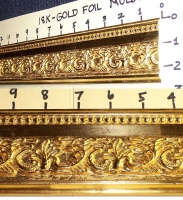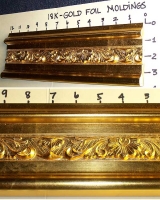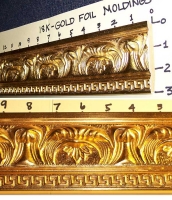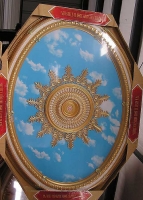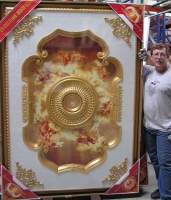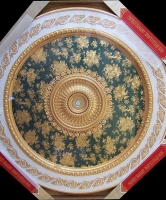Wallpaper removal is easy. Well, maybe it’s not really easy, but I have good news for you. Yes, stripping wallpaper is messy and it is time consuming. You would rather do almost anything else. As a professional, my clients have often told me that if not for the wallpaper removal, they would have decorated the room themselves. It is such a deterrent.
While it is a hassle to remove, most people’s real fears center around damaging the wall while stripping the paper. It’s true. You can. I’ve spent as much time repairing that damage. There is no reason that it has to happen, though. Once you understand what is really happening below the surface, wallpaper removal becomes quite simple. Let me talk you through it.
First, KNOW that this is going to be a messy job. There is no way around that. Bits and pieces of wet paper, covered in adhesive, will end up stuck to everything that’s not covered. Fortunately, it cleans up easily with some soap and water.
We can minimize the extent of the mess, though, by taking the time to place an inexpensive plastic drop cloth over the furniture. Lay a rubber backed runner along the wall. Remove everything hanging on the wall and make sure that the furniture has been moved back from the wall by at least three feet.
Okay, now that we have prepped our work area, what’s next? We need to discover what “group” we’re in. To do this, start by finding an edge and attempt to peel the paper off. Here’s where we either sink or swim. Some of the heavy vinyl and fabric wall coverings will just peel right off.
Others will split, leaving a layer of plain paper on the wall. What happens then is that when you try to tear off that layer, it comes off in small pieces. A lot of specialty papers and papers that have been painted over fall into this group. There is a third group that we’ll talk about in a few minutes.
If your wallpaper is in the first group, the wall coverings that just peel right off, enjoy the rest of your day. You got lucky. There are different strategies we can use for the other two groups that will save you both time and money.
Now, for the other 99% of us, there are a number of different products on the market that we could use to remove the wallpaper. I have tried them all. Save your money. All we really need is warm water.
Start by peeling off that top layer of paper. What’s left on the wall will be a layer of plain paper and adhesive. Apply the water to the paper with a sponge, squirt bottle, garden sprayer or whatever you have handy that will accomplish the job. Use just enough to saturate the paper without water running down the wall and making a mess.
Now for the really big secret to wallpaper removal: WAIT. That’s right, wait. Moisten the area again and wait some more. It normally takes about 20 to 30 minutes for the saturated paper to completely soften the adhesive beneath.
Next, use a 6” broad knife to remove the paper from the wall. It should come off easily and in long strips. If it does not, remoisten the paper and wait a few more minutes. Let the water do all the hard work! By wetting the wall ahead of where you are working, it is possible to move steadily around the room once you get started.
Now, about that last group. You’ve watered and waited and watered and waited. Frankly, this just isn’t working and you’re becoming impatient. The problem is getting enough water to penetrate the surface and completely saturate the core of the wallpaper. There is a solution. We need to break up the water resistant surface coating of the wallpaper without harming the wall.
Now you might be tempted to start gouging at the wallpaper or scraping it roughly. This is not a good idea. This is how you damage the wall. Then you have to spend more money because you have to call a contractor. You are also on his time schedule now.
There are special tools made should you run into this problem. I normally use a 36 grit sanding disc to abrade the surface by hand. NOTE: Using a disc this coarse with a power tool will destroy your wall. Make sure to use it manually only!
Rent a commercial wallpaper steamer. Steam passes through the perforations made by the sanding disc. It is absorbed by the paper and adhesive much quicker than water. Make repeated passes over an area with the steamer until the core of the paper becomes saturated and the adhesive softens. If an area is being particularly stubborn, try going over it again with the 36 grit disc to allow additional steam to penetrate the paper.
Don’t waste your time scraping at areas where the adhesive has not yet softened. I cannot stress enough that this is how walls get damaged. Steam the paper until the adhesive softens. Remove the paper with your 6” broad knife. You should see good results with the steamer.
So wallpaper removal is not always easy, but nobody said that it has to be a painful experience either. Have a wallpaper removal party and invite all your friends. Treat them to dinner afterwards and make it a girls’ day. Or how about a contest with the kids. Always keep a picture in your mind (or on the fridge) of how beautiful the job will turn out. Be proud! Life is too short, so don’t sweat the small stuff. Now, let’s get going!
Stop by
http://www.goceilingmedallion.com for all the tools you need.

